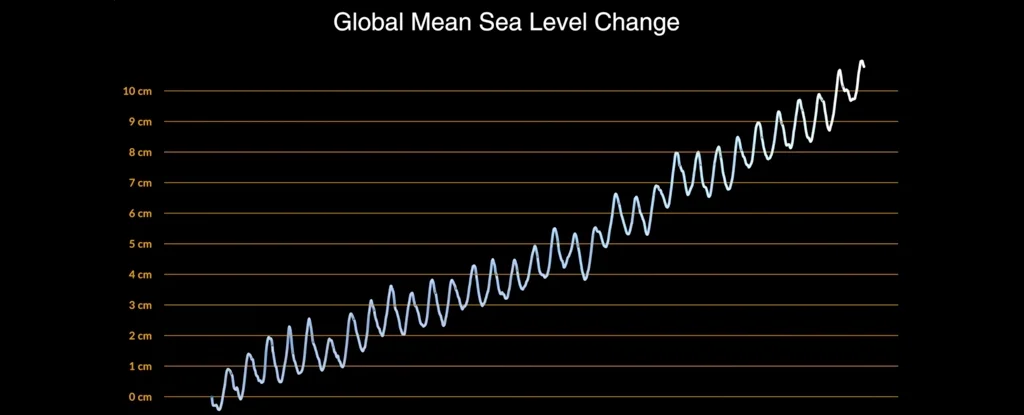
NASA Warns of Accelerated Sea Level Rise: What’s Happening and Why It Matters
A new NASA-led analysis has revealed a concerning trend: global sea levels are rising at an increasingly rapid pace. In 2024, the rise exceeded scientists' expectations, prompting warnings and raising critical questions about the future of coastal communities.
Unexpected Surge
According to NASA, the rate of sea level rise in 2024 reached 0.23 inches per year, surpassing the projected 0.17 inches. This jump is attributed to a combination of ocean warming and meltwater from land-based ice, with the former playing a more significant role than anticipated.
"The rise we saw in 2024 was higher than we expected," stated Josh Willis, a sea level researcher at NASA's Jet Propulsion Laboratory. "Every year is a little bit different, but what's clear is that the ocean continues to rise, and the rate of rise is getting faster and faster."
Thermal Expansion vs. Ice Melt
Historically, about two-thirds of sea level rise came from land-based ice melt, while one-third was due to thermal expansion (ocean water expanding as it warms). However, in 2024, this ratio flipped, with thermal expansion accounting for two-thirds of the rise. This shift highlights the significant impact of ocean warming on sea levels.

The Bigger Picture
The average yearly rise in sea level has more than doubled since 1993, when NASA began using satellites for measurements. The global sea level has increased by a total of 4 inches, a change already impacting coastal regions.
In areas like Northern California and Vancouver Island, communities are experiencing increased flooding and intense storms. Officials warn that these changes are no longer distant threats but present realities. Some communities may even face relocation due to the rising waters.
Why It Matters
Rising sea levels exacerbate storm surges, pushing floodwaters further inland. As the National Oceanic and Atmospheric Administration (NOAA) points out, this leads to more frequent and disruptive high-tide flooding, posing risks to coastal infrastructure and communities.

Beyond flooding, rising sea levels can contaminate freshwater sources, threatening access to clean drinking water. The influx of saltwater into rivers like the Ganges, combined with diminishing glacial meltwater, poses a significant challenge to water security globally.
What Can Be Done?
The primary driver of these changes is greenhouse gas emissions. Reducing our carbon footprint through renewable energy and sustainable practices is crucial. As one coastal citizen poignantly stated, "We can't just stand here and let the water take us."
Supporting policies that prioritize climate action and investing in resilient infrastructure are also essential steps in protecting coastal communities.
The Urgent Need for Action
The accelerated sea level rise is a stark reminder of the urgency of addressing climate change. Are we doing enough to mitigate the effects of global warming and protect our coastal regions? Share your thoughts and concerns in the comments below.